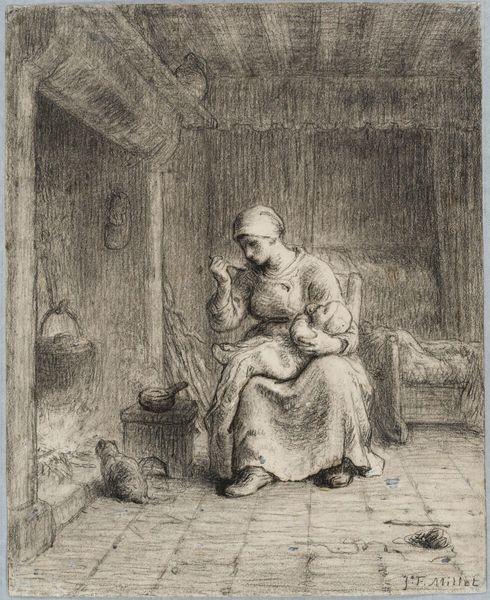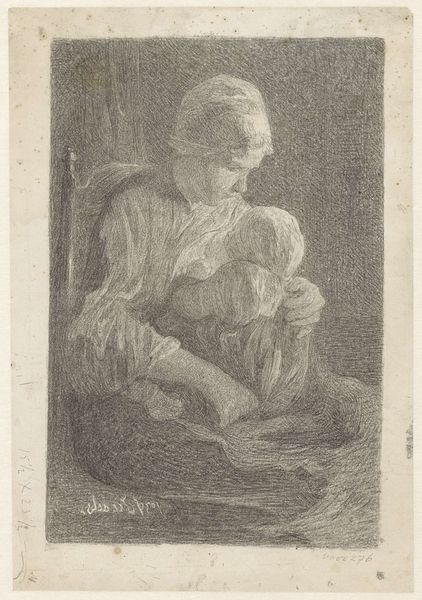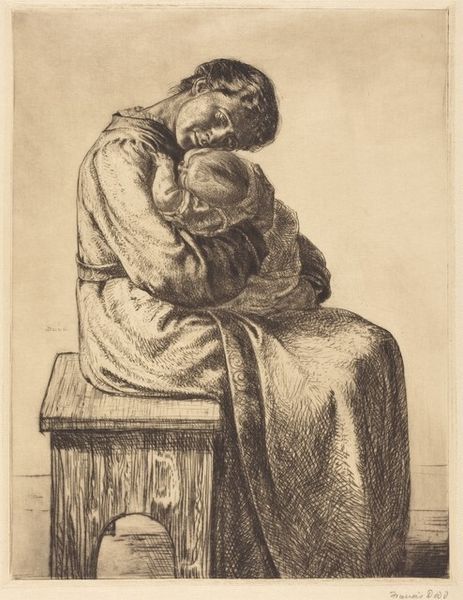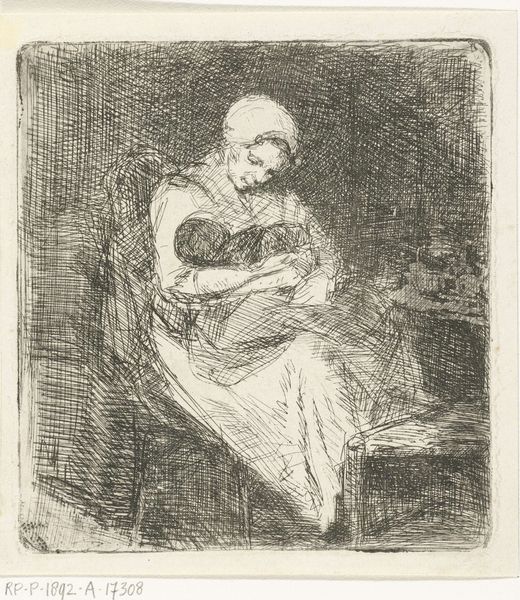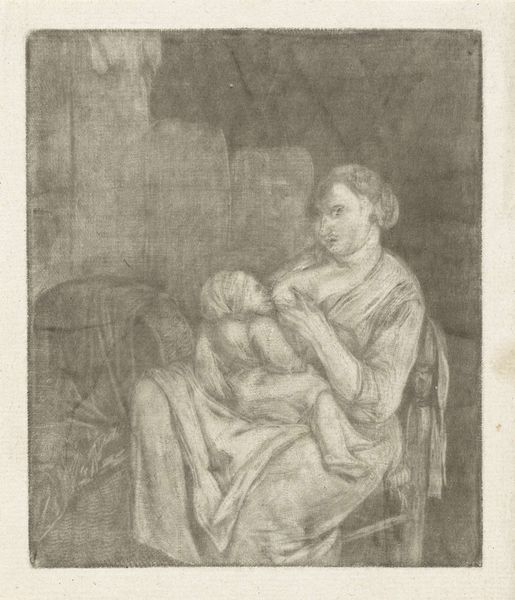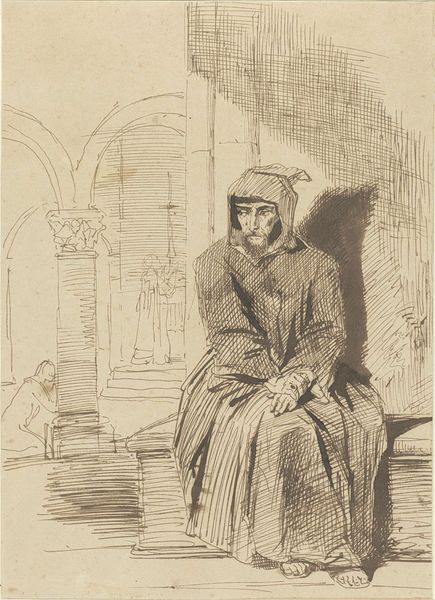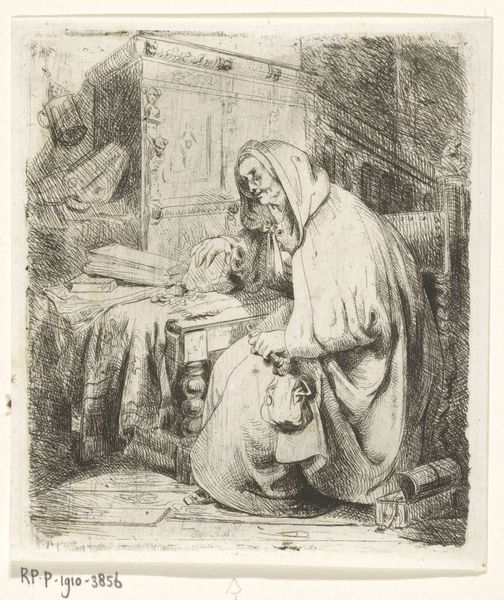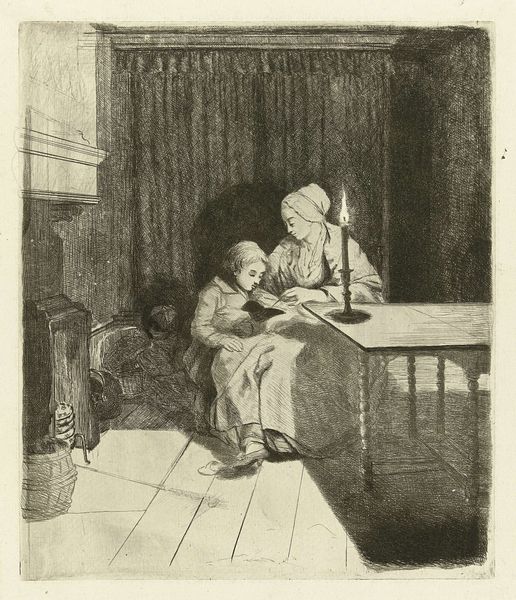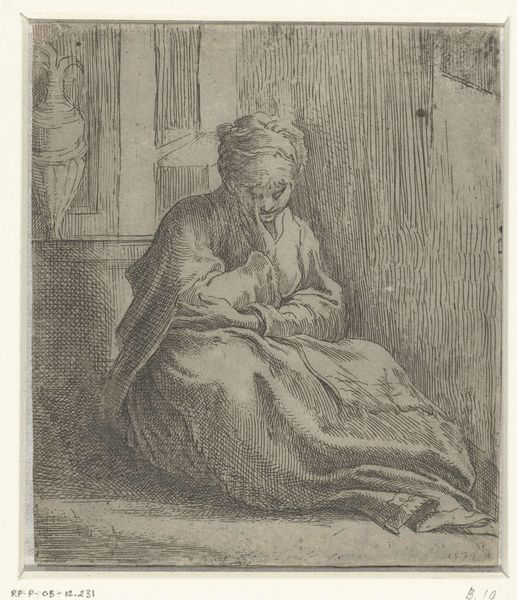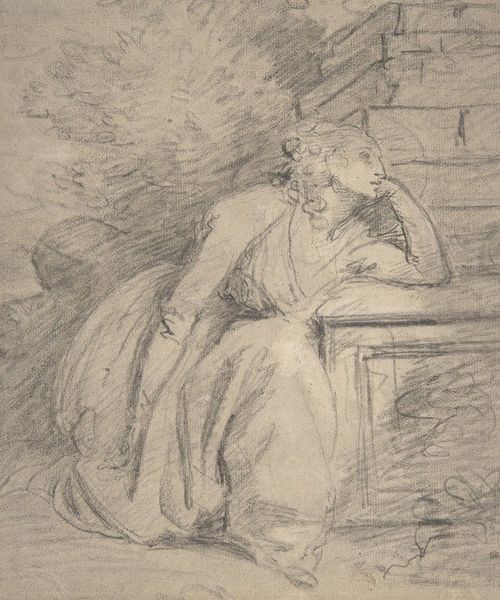
drawing, pencil
#
portrait
#
pencil drawn
#
drawing
#
pencil sketch
#
charcoal drawing
#
charcoal art
#
pencil drawing
#
romanticism
#
pencil
#
portrait drawing
#
pencil work
#
genre-painting
#
realism
Dimensions: height 306 mm, width 231 mm
Copyright: Rijks Museum: Open Domain
Curator: Before us, we have Jean-François Millet's pencil drawing, "Zittende vrouw met baby bij een open raam," created sometime between 1824 and 1875. It currently resides at the Rijksmuseum. Editor: It’s surprisingly tender. The softness of the pencil work lends an almost dreamlike quality to the scene. There is an overall delicate tonal arrangement where the texture feels subdued yet quite descriptive. Curator: Absolutely. Millet often depicted peasant life with a focus on the dignity of labor and everyday struggles. The socio-political context of mid-19th-century France, particularly the growing urbanization and displacement of rural populations, influenced artists like Millet to portray the lives of those left behind. His pieces often championed their virtues and hardships. Editor: One sees that tenderness most evidently in the mother’s downcast gaze. Notice how her face is shaded to invite the eye toward the baby. This contrasts with the outside visible through the window—everything appears sketchier and looser. This juxtaposition of clarity and ethereality helps underscore this mother's personal domain. Curator: The window suggests that this image could act as social commentary, suggesting the outside world is beckoning towards modernization and new opportunities; at the expense of a life inside defined by maternal care. We might imagine then what future awaits them both as urbanization progresses around them. Editor: Perhaps. Yet there is something to be said of the geometric rigour of the composition. The strong verticals of the window and the more oblique lines of the bed anchor the central grouping. It suggests that she is self-contained in her world. She is, at the heart of it all, monumental. Curator: It’s fascinating to consider the potential intentions of Millet given the time. Realism sought authenticity, but romanticism desired sentimentality and grace. He perhaps blends these ideas—or is conflicted by them, we may never know. Editor: Precisely. He walks the formal boundaries. The piece has so much weight but it is a lightweight pencil on paper, quite astounding. Well, regardless, it's certainly given me a few avenues of approach. Curator: And I think it's revealed layers beyond the immediately visible. Thanks for your sharp perspective!
Comments
No comments
Be the first to comment and join the conversation on the ultimate creative platform.

